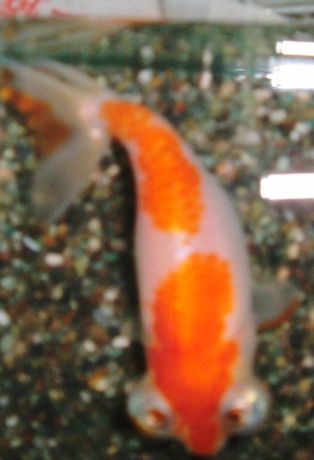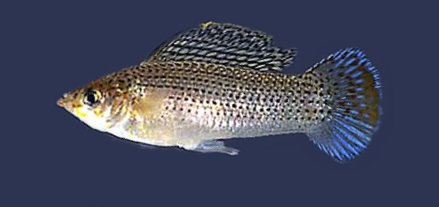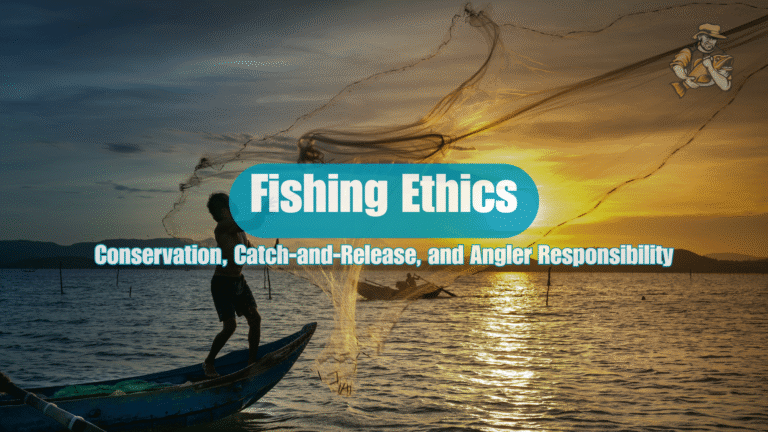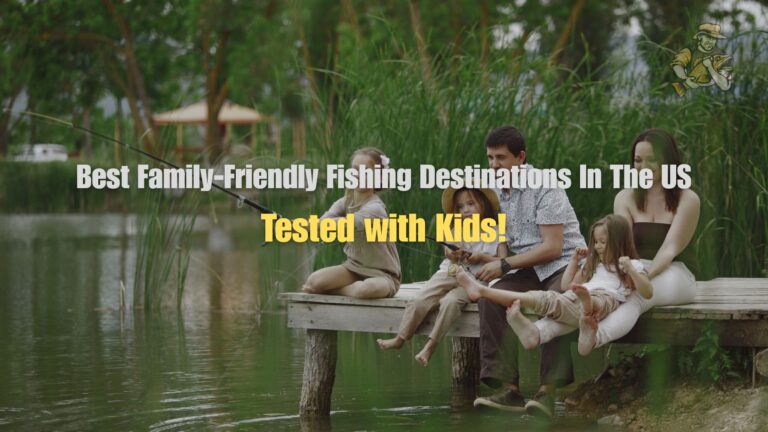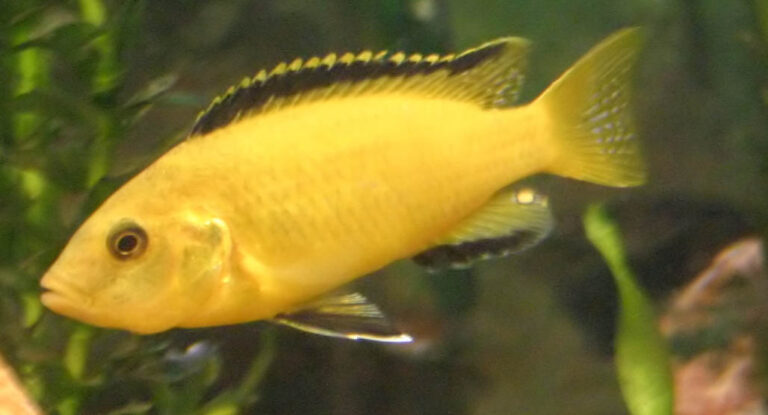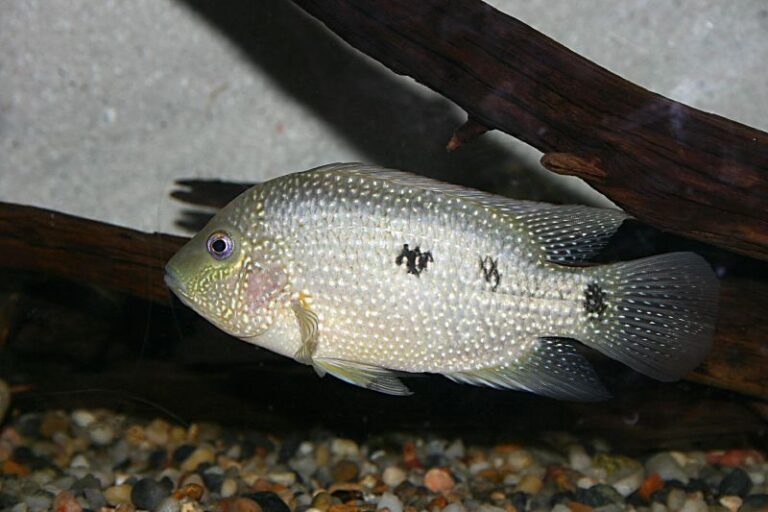Fly Fishing in the UK: Top Rivers and Seasonal Patterns
By Adam Hawthorne | Last Modified: May 20, 2025

After nearly three decades casting flies across waters from Michigan to Maine – and now spending several weeks each year exploring the UK’s rivers – I’ve developed a deep appreciation for what British fly fishing offers. My first UK fishing trip back in 2017 was honestly a bit of a disaster. I showed up with all the wrong gear, misunderstood the access laws, and managed to annoy a local fishing club bailiff within my first hour on the water.
These days I’m a bit more sorted, though I still make plenty of mistakes. Last April, I spent a full day chasing brown trout on the Test with a fly pattern that was completely wrong for the hatch – my fishing buddy Dave (who guides on the Thames tributaries) still brings it up every chance he gets.
Let’s dive into what makes fly fishing in the UK special, where you should cast your line, and how to avoid my embarrassing mistakes.
What Makes UK Fly Fishing Unique (And Sometimes Confusing)
If you’re used to American fly fishing, the UK presents some interesting differences. The first thing that threw me was the access situation. Unlike the public water access we often take for granted in the States, much of the premium fly fishing in the UK happens on private waters or through fishing clubs.
Most quality trout and salmon rivers are carefully managed, with beats (specific sections of river) available through day tickets, club memberships, or guided experiences. When my son Tommy joined me last summer, he couldn’t believe we had to book a specific stretch of river months in advance.
Water clarity also differs dramatically from what I’m used to in Michigan. Many chalk streams in southern England have crystal clear water flowing over bright gravel beds – you can often spot fish from surprising distances. This visibility is both a blessing and curse. You can see the fish, but trust me, they can see you too.
I learned this the hard way on the River Itchen near Winchester. I was wearing a bright blue fishing shirt and practically announced my presence to every trout in the county. The gillie watching me struggle politely suggested I “might want to consider something a bit less visible next time.” British understatement at its finest.
The fishing culture has its own wonderful peculiarities too. There’s often a greater emphasis on presentation and technique rather than constantly changing flies. And the traditional wet fly fishing methods developed in the UK have influenced fly fishing worldwide.
Access Rights and Fishing Licenses (More Complicated Than They Should Be)
Before you even think about casting a line, you need to sort out the legal bits. Unlike some parts of the US where a single license covers you for a state, UK fishing requires:
- A national Environment Agency rod license – This is your basic legal requirement to fish in freshwater across England and Wales. Scotland has different requirements.
- Permission from the fishery owner – This is where it gets tricky. You’ll need to either:
- Purchase a day ticket for specific beats
- Join a fishing club/association
- Book a guided experience
- Arrange private access
My first trip to the Wye Valley was nearly a complete waste because I had only secured my national license and hadn’t realized I needed separate permission for the specific stretch I wanted to fish. I ended up driving an extra two hours to find a section where I could purchase a day ticket on the spot.
The pricing for premium waters can cause serious sticker shock. A day on the more famous beats of the Test or Itchen can run £300-400 ($380-500), though there are plenty of excellent rivers where day tickets might be closer to £30-50. Last year I splurged on a guided day at the Broadlands Estate section of the Test. My wallet still hasn’t recovered, but watching massive grayling sip midges off the surface was worth every penny.
Top UK Rivers for Fly Fishing (By Region)
The UK offers remarkable diversity in its fly fishing opportunities. Rather than a comprehensive list, I’ll share my personal experiences on rivers I’ve actually fished, along with insights from local anglers I’ve befriended over pints after fishing days.
England’s Famed Chalk Streams
The chalk streams of southern England are the crown jewels of UK fly fishing. Fed by limestone aquifers, these streams maintain consistent temperatures and clarity that make them perfect trout habitat.
River Test (Hampshire)
The Test might be the most famous trout stream in the world, and it lives up to its reputation. The gin-clear water flowing over bright gravel creates perfect conditions for sight fishing. My first time on the Test, I was so focused on a rising brown trout that I slipped on some moss and ended up waist-deep in surprisingly cold April water.
The river is divided into numerous beats managed by different estates and clubs. The Houghton Club waters are nearly impossible to access unless you know a member, but beats like those at the Fishing Breaks Timsbury Five Acres section offer more accessible day tickets.
The mayfly hatch in late May is legendary. Last year I timed my visit for May 24th – a bit early as it turned out, but I still found good numbers of fish looking up. The trout here average 1-3 pounds but can grow much larger. The largest I’ve managed was a 4.5-pounder that took a size 14 Iron Blue Dun pattern during a light drizzle.
River Itchen (Hampshire)
If possible, the Itchen is even clearer than the Test, with visibility that can make stalking trout incredibly challenging but rewarding. The weed growth can be substantial in summer months, creating perfect hiding spots for trout but making presentation trickier.
My favorite section has been the Itchen Abbas beat, where I’ve had success with small nymphs fished upstream to visible feeding fish. There’s a particular bend in the river with an undercut bank that consistently holds a few larger trout – I’ve never managed to fool the biggest one despite trying every trick in my arsenal.
River Kennet (Berkshire)
Often overlooked compared to its more famous neighbors, the Kennet offers excellent fishing with slightly less pressure and lower prices. The section near Hungerford provided me with one of my most memorable UK fishing days – a cloudy afternoon with consistent blue-winged olive hatches and willing trout.
What I love about the Kennet is its variety. Some stretches feel like classic chalk streams, while others have deeper runs and pools that remind me more of freestone rivers back home.
Northern Gems (Where the Weather Tests Your Resolve)
The rivers of northern England and Scotland present a completely different character – often more rugged, with darker waters and variable conditions.
River Eden (Cumbria)
The Eden and its tributaries offer some of England’s most diverse fishing, with opportunities for brown trout, sea trout, and salmon depending on the season. The landscape is stunning, set among the rolling hills of the Eden Valley and the northern Pennines.
I spent three consecutive rainy days on the Eden near Appleby-in-Westmorland back in 2019. The persistent drizzle had the river slightly colored, but it also triggered some excellent hatches of large dark olives. My most productive fly was an old Greenwell’s Glory pattern that a local tackle shop owner had pressed into my hand, insisting it was “what the fish expect to see here.”
The fishing clubs in this region tend to be more accessible to visitors, with reasonable day ticket prices.
River Tweed (Scottish Borders)
The Tweed system is world-renowned for salmon, but its trout fishing deserves equal attention. The river winds through the beautiful borders country between England and Scotland, with beats varying from intimate wadeable sections to broader reaches.
I fished the upper Tweed near Peebles on a particularly challenging day when strong winds made accurate casting nearly impossible. After struggling for hours with traditional dry flies, I switched to a heavier wet fly approach, swinging flies downstream – a technique with deep roots in Scottish fly fishing tradition. This adjustment saved the day, resulting in several nice brown trout including a surprisingly chunky 3-pounder that took a soft-hackle partridge and orange.
The thing about the Tweed is its moods – I’ve seen it gin-clear one day and chocolate brown the next after heavy rains. Flexibility in techniques and expectations is essential.
Welsh Waters (Underrated and Less Crowded)
Wales offers some spectacular fly fishing that receives less international attention, meaning more opportunities for those in the know.
River Wye
The Wye is a magnificent river system with excellent opportunities for trout, grayling, and salmon. The landscape is stunning, with the river cutting through lush valleys and past historic sites.
Last October, I focused on grayling fishing in the middle Wye, and it exceeded all expectations. These “ladies of the stream” were actively feeding on small nymphs, and a simple two-fly rig with a heavy Czech nymph followed by a smaller bead-head produced consistent action.
What makes the Wye special to me is its accessibility compared to some English chalk streams. The Wye and Usk Foundation has done incredible work securing fishing access on numerous beats, with many day tickets available online for reasonable prices.
River Dee (North Wales)
The Welsh Dee (not to be confused with the Scottish river of the same name) offers exceptional wild trout fishing. The section running through the Llangollen area is particularly scenic, with the river flowing through a dramatic valley.
My experience on the Dee came during an unusually hot July day two years ago when most fish seemed to be hiding from the bright sun. I found success by focusing on shaded areas beneath overhanging trees and adjusting to very small dry flies (size 20-22) that matched the tiny midges that were the only insects active during the heat.
Seasonal Patterns and When to Fish (Month by Month)
One thing that took me ages to figure out was the seasonal rhythm of UK fly fishing. The patterns differ significantly from what I’m used to back in Michigan, and local knowledge is invaluable. Here’s my month-by-month breakdown based on personal experience and countless conversations with UK anglers.
Spring Awakening (March-May)
March – Early Season Opportunities
The trout season on most rivers opens in March, though conditions can still be quite cold and flows potentially high with spring rains. This is typically a time for nymph fishing rather than dry flies, though you might catch the tail end of the grayling season on rivers where it’s permitted.
Last March I fished the Derbyshire Wye (a smaller limestone river, not to be confused with the larger River Wye mentioned earlier), focusing on deeper pools with tungsten-bead nymphs. The trout were there but lethargic – strikes were subtle, and I missed many before adjusting to a more sensitive indicator setup.
April – Improving Conditions
April brings more consistent hatches, particularly large dark olives and grannom caddis on many rivers. Water levels typically moderate, making wading easier and opening up more fishing opportunities.
My most successful April pattern has been a Deer Hair Emerger in size 16-14, particularly during afternoon olive hatches on the chalk streams. Last year on the Anton (a Test tributary), I watched a methodical brown trout working a feeding lane, taking emergers just beneath the surface. After several refusals to my standard dry flies, switching to the emerger pattern resulted in an immediate take.
May – Mayfly Madness
May brings the legendary mayfly hatch to many southern chalk streams – an experience every fly angler should witness at least once. These large, elegant insects trigger spectacular feeding behavior from even the most selective trout.
During the mayfly peak, trout can become almost competitive in their feeding, sometimes making presentation less critical than timing. However, on heavily fished waters like the Test, the fish have seen every mayfly pattern imaginable, so having several variations can be crucial.
My go-to has been a Spent Mayfly pattern for evening fishing when the spinners are falling. Two years ago on the Avon near Salisbury, I experienced a spinner fall so intense it looked like snow on the water – almost overwhelming the trout with options, making them paradoxically harder to catch despite the abundance of food.
Summer Sessions (June-August)
June – Post-Mayfly Adjustments
After the mayfly peak, fishing often transitions to smaller insects and more technical presentations. The trout, having gorged on protein-rich mayflies, can become more selective.
This is when I’ve found terrestrial patterns like beetles and ants becoming increasingly effective, particularly on windy days near grassy banks. The key adjustment is typically moving to lighter tippets (I often drop to 6X or even 7X) and smaller flies.
July – Summer Challenges
July brings warmer water temperatures, lower flows, and more wary fish. Early mornings and evenings become prime times, with midday fishing often slowing considerably.
This is when I focus on the shaded sections of rivers, particularly under overhanging trees where trout find both cooler water and potential food sources in the form of terrestrials dropping from above. A beetle pattern fished tight to overhanging alders saved my July trip to the Usk last year when most of the river seemed devoid of active fish during the heat of the day.
August – Low Water Tactics
August typically presents the most challenging conditions of the season, with low, clear water and educated fish. This is when precision becomes paramount.
On the Dove in Derbyshire, last August required almost perfect presentations with long leaders (12+ feet) and small flies. I found success by switching to a longer, lighter rod (a 9′ 3-weight instead of my usual 9′ 5-weight) for more delicate presentations. The fish were there, but they demanded near-perfect drifts.
Autumn Glory (September-November)
September – Renewed Activity
September often brings cooling temperatures and more active fish, along with the start of the grayling season on many rivers. Trout prepare for spawning, often becoming more aggressive.
The September evening caddis hatches on the Welsh Dee provided some of my most enjoyable UK fishing, with trout becoming less selective and more willing to rise to attractors like the Royal Wulff or Stimulator patterns that might be ignored during summer’s more technical fishing.
October – Grayling Focus
As trout season closes on many rivers, grayling fishing takes center stage. These beautiful fish continue feeding actively even as temperatures drop.
The middle reaches of the Test and Itchen offer spectacular grayling fishing. Czech nymphing techniques excel here, though on warmer days you might still find grayling rising to midges. My personal record grayling (just over 2 pounds) came from the Test in October using a simple pink shrimp pattern fished deep in a run below a bridge.
November – Late Season Opportunities
November brings shorter days but continued opportunities for grayling. Fishing becomes more focused on the warmer hours around midday.
I’ve found that bright, flashy nymphs sometimes outperform more natural patterns as water temperatures drop. My theory is that the fish need more incentive to move as their metabolism slows, though that might just be my justification for using my favorite sparkly patterns.
Technical Nuances of UK Fly Fishing (The Stuff That Took Me Years to Learn)
There are several technical aspects of UK fly fishing that differ from American approaches. Understanding these nuances can significantly improve your success.
Traditional Wet Fly Techniques
While modern nymphing methods have universal application, traditional wet fly fishing remains effective and culturally significant in the UK, particularly on northern rivers.
The basic approach involves casting across and slightly downstream, allowing the flies to swing through likely holding areas. Instead of the dead drift we often seek with dry flies or nymphs, the wet fly is meant to move naturally in the current.
I embarrassed myself thoroughly on the Clyde in Scotland by insisting on fishing dry flies during non-existent hatches, while locals were consistently catching fish on traditional spider patterns swung through the same runs. When I finally swallowed my pride and asked for advice, a gentleman named Malcolm showed me his simple three-fly cast (using Snipe and Purple, Partridge and Orange, and a Greenwell’s Spider). The technique felt foreign at first, but by the end of the day, I was connecting with fish regularly.
Leader Construction for Chalk Streams
The gin-clear waters and educated fish of chalk streams demand specialized leader setups. While I typically use a 9-foot tapered leader in Michigan, my chalk stream setup has evolved to 12-15 feet with a very long, fine tippet section.
For really technical dry fly fishing on rivers like the Test, I’ll use a 12-foot tapered leader extended with 3-4 feet of fine tippet (usually 6X or 7X), creating a total leader length of 15-16 feet. This allows for better presentation and reduces the chances of spooking fish.
I learned this approach from Dave, my UK fishing buddy, who was horrified by my standard American leader setup on our first outing together. “You might as well be throwing your car keys at them,” was his assessment of my chunky leader and tippet combination.
The Upstream Nymph
While Czech nymphing and other modern techniques are popular, the traditional upstream nymph approach remains effective and is worth mastering for UK rivers.
This technique involves casting a weighted nymph directly upstream and following its drift with the rod tip, detecting takes through subtle movements of the leader or hesitations in the drift. It’s more visual than indicator nymphing and requires careful tracking of the leader.
I struggled with this technique initially, missing countless subtle takes. The breakthrough came when a gillie on the Dove showed me to watch the “belly” of my line rather than the tip or leader. This subtle change in focus helped me detect the nearly imperceptible hesitations that indicated a fish had taken my fly.
Essential Gear for UK Fly Fishing (What I Actually Use)
Gear requirements for UK fishing vary significantly by region and target species. Here’s what I’ve found works best based on my experiences.
Rods and Line Weights
For chalk stream fishing, I’ve settled on a 9-foot 4-weight as my go-to rod. The lighter weight allows for delicate presentations, while the length provides decent line control. When fishing larger rivers like the Wye or Tweed, I’ll step up to a 5-weight for better wind performance and longer casts.
The key distinction I’ve found is that UK fishing often demands more finesse than power. My favorite American fast-action rods proved too stiff for the delicate presentations needed on chalk streams. I’ve had better success with more moderate actions that allow for gentle landings and subtle mends.
After trying various setups, my current favorite chalk stream rod is an older Sage SLT 9′ 4-weight with a relatively soft tip – it presents flies gently but has enough backbone to control larger fish. For bigger rivers, I use a modern Thomas & Thomas Contact 9′ 5-weight, which handles wind better while still providing reasonable delicacy.
Fly Lines and Leaders
Line choice is critical for UK fishing. I’ve found weight-forward floating lines with longer front tapers work best for most situations, providing good presentation capabilities while still allowing reasonable distance when needed.
For leaders, as mentioned earlier, I’ve adapted to much longer constructions than I typically use in the States. My standard chalk stream setup is a 12-foot tapered leader extended with additional tippet to 15+ feet for technical dry fly situations.
One brand-specific tip: I’ve had excellent results with the RIO Technical Trout line paired with their Suppleflex leaders for chalk stream fishing – this combination provides excellent turnover of long leaders while still landing gently.
Waders and Footwear
UK fishing often involves bankside stalking as much as wading, particularly on chalk streams where in-water wading might be restricted to protect the river bed. I’ve found lightweight breathable waders essential but often spend more time standing on the bank than in the water.
For chalk streams, felt soles are still permitted (unlike in some US states) and provide better grip on the characteristic chalky river bottoms. However, sticky rubber soles with studs work well for most other UK rivers.
One specific recommendation that’s saved me multiple times: UK weather is notoriously changeable, so I always carry a packable waterproof jacket regardless of the forecast. Getting caught in a sudden downpour five miles from the car without rain gear is a mistake I’ve made exactly once.
Fly Selection
While I could write an entire article just on fly selection, here are the patterns that have consistently produced for me across various UK waters:
For Dry Fly Fishing:
- F-Fly (sizes 16-20) – Absolutely deadly during olive hatches
- Deer Hair Emerger (sizes 14-18) – My go-to when fish are taking emergers
- Elk Hair Caddis (sizes 14-18) – Effective during evening caddis activity
- Parachute Adams (sizes 14-20) – The universal attractor that works everywhere
- Griffith’s Gnat (sizes 18-22) – Essential for midge hatches
- Klinkhåmer Special (sizes 14-18) – Perfect for grayling when they’re rising
For Nymph Fishing:
- Pheasant Tail Nymph (sizes 14-18) – The universal nymph that works everywhere
- Gold-Bead Hare’s Ear (sizes 14-18) – Excellent general searching pattern
- Pink Shrimp (sizes 14-16) – Devastating for grayling
- Czech Nymphs (various patterns) – Essential for modern European nymphing
Traditional Wet Flies:
- Greenwell’s Glory (sizes 14-16) – Historic pattern that still produces
- Partridge and Orange (sizes 14-16) – Classic soft hackle
- Snipe and Purple (sizes 14-16) – Traditional North Country spider
The most productive flies often vary by river. For example, on the Test, I’ve found small F-Flies and Parachute patterns consistently outperform bulkier dry flies, while on northern rivers like the Eden, traditional wet flies often outfish modern patterns.
Common Mistakes and How to Avoid Them (Learn From My Failures)
Over my years fishing UK waters, I’ve made just about every mistake possible. Here are the most common errors and how to avoid them.
Ignoring River Etiquette
UK fishing has its own etiquette that differs from American norms. On chalk streams particularly, there’s often a specific “beat” system where you’re assigned a section of river, and leapfrogging ahead of other anglers is considered extremely poor form.
My embarrassing moment: On my first visit to the Test, I spotted rising fish in what turned out to be someone else’s beat and started fishing there, completely oblivious to the territorial nature of UK chalk stream fishing. The gentleman whose water I’d invaded was polite but clearly annoyed, and I felt like a complete idiot once I understood my mistake.
The solution: Always clarify beat boundaries when you purchase your ticket or meet your guide. If fishing club water, ask about local customs and rotation systems.
Overcomplicating Fly Selection
While having a diverse fly selection is important, I’ve often found myself overthinking my fly choices on UK rivers, constantly changing patterns when a more patient approach with fewer changes would have been more effective.
My embarrassing moment: On the Itchen, I went through literally 12 different dry fly patterns trying to match a small olive hatch while a local angler upstream caught multiple fish on the same pattern. When I finally asked what he was using, it turned out to be a simple Parachute Adams in a size I already had – the difference was his patience and presentation, not the pattern.
The solution: Focus more on presentation than constant fly changes. Start with a few proven patterns appropriate for the season and conditions, and perfect your drift before switching flies.
Underestimating Weather Impacts
The UK’s weather can change dramatically and quickly, affecting river conditions and fishing more rapidly than I was accustomed to.
My embarrassing moment: Planning a three-day trip to the River Usk without checking the weather forecast, only to arrive during a major storm system that blew out the river completely. I ended up driving hours to find fishable water when a simple weather check could have prompted me to reschedule.
The solution: Always check both weather forecasts and river level reports before planning trips.
Neglecting Local Knowledge
Perhaps my biggest recurring mistake has been not taking full advantage of local knowledge, particularly from fishing shops, gillies, and fellow anglers.
My embarrassing moment: Struggling all morning on the River Wharfe using standard nymphing techniques, while a group of local anglers consistently caught fish. When I finally swallowed my pride and asked for advice, they showed me a specific deep channel where fish were holding due to low water conditions – a feature I would never have identified without their knowledge.
The solution: Always visit local fly shops before fishing new waters, and don’t hesitate to respectfully ask for advice from other anglers. Most UK fly fishers are friendly and willing to help if approached politely.
Conservation and River Stewardship (Increasingly Important)
The UK has a strong tradition of river conservation, with many organizations working to protect and improve these precious resources.
Catch and Release Practices
Catch and release is increasingly common on UK rivers, particularly for wild trout and grayling. Most chalk streams and premium fishing beats have strict catch and release policies, though some still allow limited harvest.
Using barbless hooks, proper landing techniques, and minimizing handling time are essential practices. I’ve noticed UK anglers often use unhooking mats even for trout – something less common in American fly fishing but worth adopting.
Many rivers also have specific regulations regarding fishing methods to minimize harm to fish. For example, some chalk streams restrict nymphing during certain seasons to protect spawning areas.
Environmental Challenges
UK rivers face numerous environmental challenges, from agricultural runoff to water extraction and climate change impacts. Organizations like the Wild Trout Trust and Rivers Trust are doing vital work to address these issues.
One specific concern is the impact of increased water temperatures on cold-water species like brown trout. During my last visit to southern chalk streams in July, several beats had voluntarily closed afternoon fishing due to high water temperatures – a responsible approach to conservation that more fisheries are adopting.
UK Fly Fishing FAQs
Do I need a separate license for Scotland?
Yes, Scotland has a different system than England and Wales. In Scotland, you generally don’t need a government license like the EA license, but you do need permission from the fishery owner for wherever you plan to fish. This is typically arranged through ghillies, fishing clubs, or hotels with fishing rights.
What’s the difference between a beat and a stretch?
In UK fishing terminology, a “beat” typically refers to a specifically defined section of river that you have exclusive access to for your fishing session. These are common on chalk streams and premium salmon rivers. A “stretch” is a more general term for a section of river and may not imply exclusive access.
Are American fishing techniques effective in the UK?
Many modern American techniques work well in the UK, particularly nymphing methods. However, traditional UK approaches like wet fly fishing and upstream dry fly techniques remain extremely effective and are worth learning. I’ve found that blending approaches typically yields the best results.
What’s a ghillie or gillie?
A ghillie (sometimes spelled gillie) is a fishing guide or attendant, particularly common on salmon rivers and premium trout waters. They provide local knowledge, help with access, and often maintain the fishery. On chalk streams, you might hear similar roles referred to as riverkeepers.
How far in advance should I book premium chalk stream fishing?
For the most famous beats on rivers like the Test and Itchen, booking 6-12 months in advance is often necessary, particularly for prime mayfly season dates (late May to early June). Less famous rivers and beats might be available with shorter notice, but I still recommend booking several months ahead for any summer fishing.
Final Thoughts on UK Fly Fishing
Fly fishing in the UK offers some of the most diverse, challenging, and rewarding experiences I’ve found anywhere in the world. From the historic chalk streams of southern England to the rugged spate rivers of Scotland, each water has its own character, challenges, and rewards.
What makes UK fishing special isn’t just the quality of the fishing itself, but the deep cultural and historical context. These are rivers where fly fishing traditions were born and refined over centuries – fishing them connects you to that heritage in a profound way.
My advice for anyone planning their first UK fly fishing trip is to approach the experience with an open mind and a willingness to adapt. Leave your preconceptions at home, embrace local methods and knowledge, and treat these historic waters with the respect they deserve.
The UK’s rivers have survived centuries of pressure and continue to provide world-class fly fishing opportunities. With proper stewardship and conservation, they’ll continue to do so for generations to come. I can’t wait for my next chance to cast a line across these historic waters – maybe I’ll see you there.

Meet Adam Hawthorne
I’m a lifelong fishing enthusiast who’s spent years exploring rivers, lakes, and oceans with a rod in hand. At Fishing Titan, I share hands-on tips, honest gear reviews, and everything I’ve learned about fish and ocean life, so you can fish smarter and enjoy every cast.
Share:

Meet Adam Hawthorne
I’m a lifelong fishing enthusiast who’s spent years exploring rivers, lakes, and oceans with a rod in hand. At Fishing Titan, I share hands-on tips, honest gear reviews, and everything I’ve learned about fish and ocean life, so you can fish smarter and enjoy every cast.
Related Articles
-
Celestial Eye Goldfish
The Celestial Eye Goldfish represents one of the most distinctive varieties within ornamental aquaculture, known scientifically as Carassius auratus. This remarkable goldfish cultivar displays upward-facing…
-
Black Molly
The Black Molly represents one of the most recognizable and enduring species in the freshwater aquarium trade, captivating both novice and experienced aquarists with its…
-
Fishing Ethics: Conservation, Catch-and-Release, and Angler Responsibility
I was ten years old when my grandfather caught me throwing rocks at a school of bluegill near our dock on Lake Michigan. Instead of…
-
7 Best Family-Friendly Fishing Destinations in the U.S. (Tested with Kids!)
I still remember the first time I took my son Tommy fishing. He was five, armed with a Spider-Man rod that was more toy than…
Fish Species
-
Yellow Lab Cichlid
The Yellow Lab Cichlid (*Labidochromis caeruleus*) stands as one of Africa’s most recognizable freshwater fish species, distinguished by its vibrant golden-yellow coloration and peaceful temperament…
-
Bleeding Heart Tetra
The Bleeding Heart Tetra represents one of the most distinctive and peaceful freshwater fish species in the aquarium trade, captivating enthusiasts with its characteristic bright…
-
Diamond Tetra
The Diamond Tetra (Moenkhausia pittieri) stands as one of the most captivating freshwater fish species in the aquarium trade and its native South American ecosystems….
-
Texas Cichlid
The Texas Cichlid (Herichthys cyanoguttatus) stands as one of North America’s most distinctive freshwater fish species, representing the sole native cichlid of the United States….

